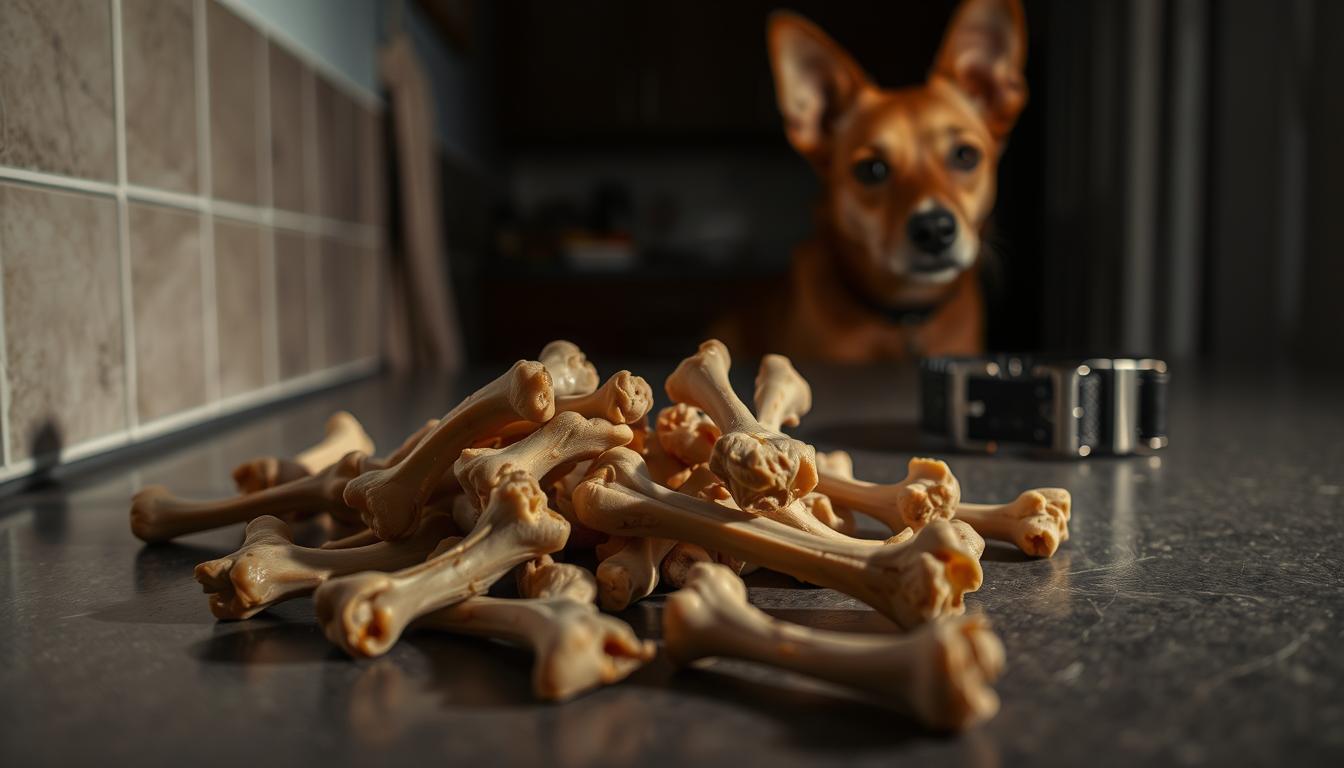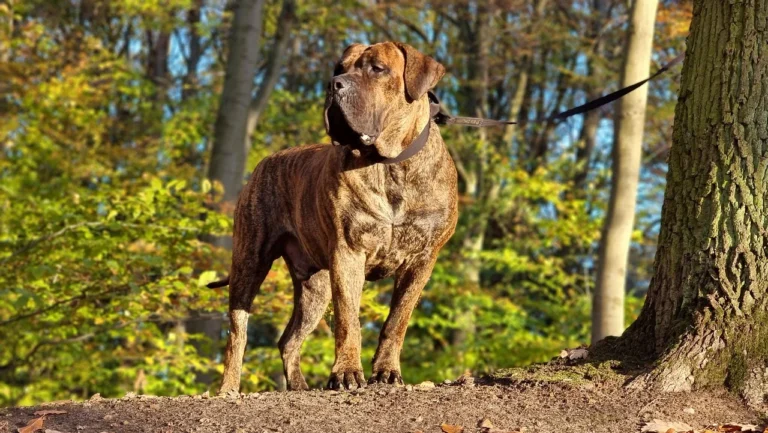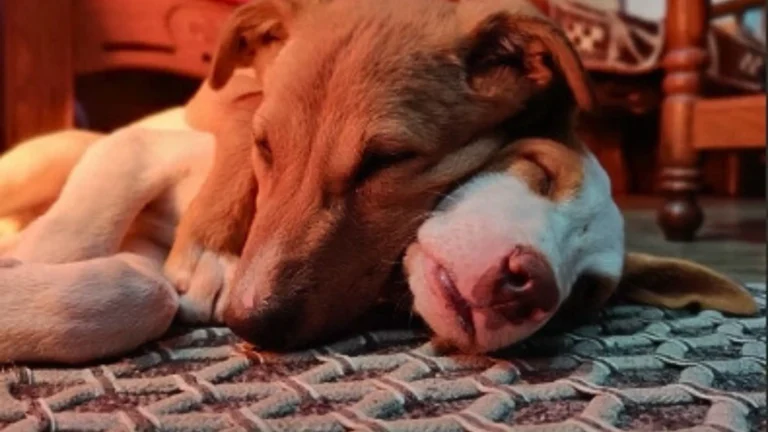Chicken Bones for Dogs: Safe or Dangerous?
Every dog owner has that moment of panic when their pet sneaks a chicken bone. The thought of the dangers of chicken bones for dogs can be scary. You worry if this one moment could harm your beloved pet.
Dogs are curious and love to explore things they shouldn’t. Chicken bones are a big risk that many pet owners don’t know about. It’s not just the bone, but the possible problems it could cause.
It’s important to understand the dangers. Not all chicken bones are safe for dogs. Knowing the difference can protect your dog’s health. This guide will help you keep your dog safe from bone-related emergencies.
If you’re new to dog ownership or have been a pet parent for a while, this info is for you. It will help you understand canine nutrition and safety better. Let’s explore the key points about chicken bones and your dog’s health.
Table of Contents
Understanding the Risks of Chicken Bones for Dogs
Dog owners often wonder if chicken bones are safe for their pets. It’s important to know the dangers to keep your dog healthy. Chicken bones can be risky, and every dog owner should be aware of this.
When it comes to cooked chicken bones, the answer is no. These bones are especially dangerous and can harm your dog’s health.
Common Dangers of Chicken Bones
- Potential for internal punctures
- Choking hazards
- Digestive tract blockages
- Severe intestinal damage
Why Cooked Bones Are More Hazardous
Raw chicken bones are less risky than cooked ones. Cooked bones are brittle and can break into sharp pieces. These pieces can:
- Tear the esophagus
- Cause internal bleeding
- Create dangerous digestive obstructions
Raw vs Cooked Bone Differences
| Bone Type | Risk Level | Potential Complications |
|---|---|---|
| Cooked Chicken Bones | High Risk | Splintering, internal injuries |
| Raw Chicken Bones | Moderate Risk | Bacterial contamination, choking |
Knowing why chicken bones are harmful to dogs can help prevent serious problems. Always talk to your vet about what’s safe for your pet to eat.
What Happens When Dogs Eat Chicken Bones
When your dog eats chicken bones, it’s a big worry. These bones can splinter and cause serious health issues. The stomach’s acid helps break down these dangers.
Most chicken bones dissolve in 24-48 hours in a dog’s stomach. Not all bone ingestions are emergencies, but watching your dog closely is key.
- Stomach acid starts breaking down bone pieces
- Digestive enzymes help reduce risks
- Small bone parts might pass through the digestive system
Feeding chicken bones to dogs can lead to problems like:
- Internal punctures from sharp bone pieces
- Blockages in the digestive tract
- Potential choking hazards
Knowing these risks helps you choose better for your dog’s diet and care after eating bones.
| Bone Type | Digestibility | Risk Level |
|---|---|---|
| Raw Chicken Bones | Moderate | Lower Risk |
| Cooked Chicken Bones | Low | High Risk |
Vets say to watch your dog closely if they eat chicken bones. Look for signs like vomiting, tiredness, or changes in bowel movements.
Immediate Steps If Your Dog Swallows Chicken Bones
It’s scary when you find out your dog has eaten chicken bones. Knowing how to react is key to keeping them safe. Chicken bones can be choking hazards, so it’s important to act fast and carefully.
Handling chicken bone incidents needs calm and smart actions. Your main goal is to avoid problems and keep your dog healthy.
Recognizing Emergency Situations
Look out for these signs that mean you need to get your dog to the vet right away:
- Difficulty breathing or excessive coughing
- Visible distress or pawing at the mouth
- Repeated gagging or retching
- Bleeding from the mouth
- Visible pain or discomfort
When to Contact Your Veterinarian
Not every chicken bone incident needs emergency care. But, it’s always wise to get advice from a vet. Call your vet right away if:
- Your dog shows any signs of distress
- You’re unsure about the size or type of bone consumed
- Your dog has pre-existing health conditions
First Aid Measures at Home
While waiting for vet advice, do these things:
| Action | Purpose |
|---|---|
| Offer soft food | Help cushion potential bone fragments |
| Keep dog calm | Prevent additional stress or injury |
| Monitor closely | Watch for any changes in behavior or symptoms |
Important: Never induce vomiting without professional veterinary guidance. This can cause additional harm and potentially worsen the situation.
Veterinary Treatment Options
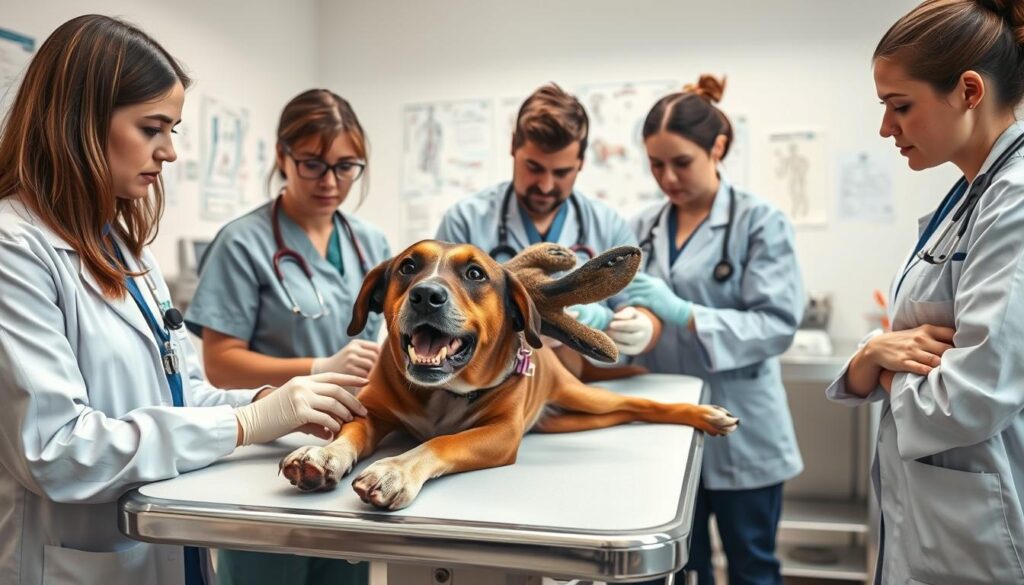
If your dog eats chicken bones, you need to see a vet fast. Chicken bones can cause serious health problems in dogs. Your vet will create a treatment plan just for your dog.
First, your vet will check your dog with tests. They might do:
- Physical examination
- X-ray imaging
- Potential ultrasound screening
Then, they might do several things to help:
- Intravenous (IV) fluid therapy to prevent dehydration
- Specialized gastrointestinal diet
- Pain management medications
- Potential surgical intervention for severe cases
Your vet might also suggest other care. They might give probiotics to help your dog’s stomach. They’ll watch your dog closely to make sure they get better.
Always prioritize professional veterinary guidance when dealing with potential chicken bone ingestion emergencies.
After treatment, you need to keep an eye on your dog. Your vet will tell you how to care for your dog at home. They’ll also schedule follow-up visits to make sure your dog is okay.
Monitoring Your Dog After Bone Ingestion
If your dog eats a chicken bone by accident, it’s important to watch them closely. Knowing what to do can help them feel better and stay healthy.
The first 24 hours are very important. You need to watch for any signs of trouble. This can help catch problems early and avoid serious health issues.
Digestion Timeline Insights
Dogs digest chicken bones at different rates. But usually, bone pieces move through their system in 24-48 hours. Here’s what you can expect:
- 0-12 hours: Initial observation period
- 12-24 hours: Critical monitoring phase
- 24-48 hours: Digestion and potential elimination window
Critical Warning Signs
Look out for these signs that might mean trouble:
| Warning Sign | Potential Severity | Recommended Action |
|---|---|---|
| Repeated vomiting | High | Contact veterinarian immediately |
| Blood in stool | Critical | Seek emergency veterinary care |
| Abdominal pain | Moderate to High | Schedule veterinary examination |
Even if your dog seems fine, keep watching them. Some problems might not show up right away. So, stay alert and listen to your gut about your pet’s health.
Prevention Strategies and Safe Alternatives
To keep your dog safe from chicken bones, you need to take action and find good alternatives. Knowing why chicken bones are bad for dogs is the first step to a safer home for your pet.
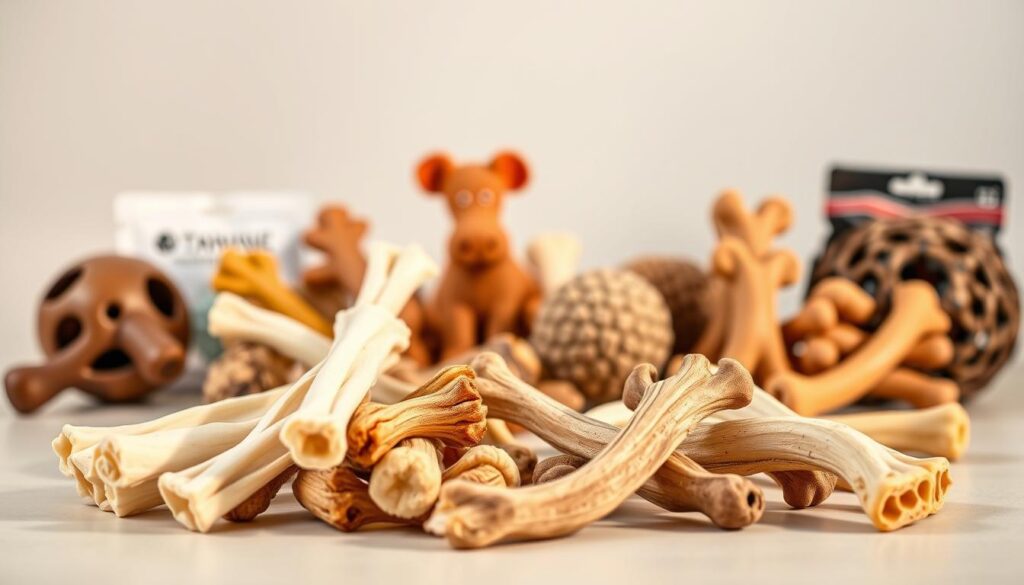
- Dental Chews: Look for ones with the Veterinary Oral Health Council (VOHC) seal
- Rubber chew toys made for dogs who chew a lot
- Dog bones from trusted pet brands
- Frozen carrots for puppies and small dogs
Here are some important prevention steps:
- Keep trash cans closed with tight lids
- Teach family about the dangers of chicken bones
- Watch your dog during meal cleanup
- Set up chew areas with safe toys
Vets say to pick chew toys that fit your dog’s size and how hard they chew. Check toys often for damage to avoid choking risks.
Remember: No bone is 100% safe. Always watch your dog to prevent accidents.
By choosing these safe alternatives, you can meet your dog’s need to chew without risking their health.
Comparing Different Types of Bones
It’s important for pet owners to know which bones are safe for dogs. Not all bones are safe, and knowing the difference can help avoid health risks. This is especially true for raw chicken bones for dogs.
Dogs have different bone options, each with its own safety level. These bones fall into two main categories: edible and recreational bones.
Safe Bone Options for Dogs
- Raw chicken necks (for small dogs)
- Soft raw poultry bones
- Raw beef knuckle bones
- Raw lamb bones
Choosing raw bones is usually safer than cooked ones. Raw bones are softer and less likely to splinter.
Dangerous Bone Types to Avoid
| Bone Type | Risk Level | Reason |
|---|---|---|
| Cooked Chicken Bones | High Risk | Brittle, can splinter and cause internal damage |
| Weight-Bearing Bones | Moderate Risk | Too hard, can break teeth |
| Pork Bones | High Risk | Prone to splintering, potential bacterial contamination |
Remember, dogs should not eat cooked chicken bones. Cooked bones are brittle and can harm your dog’s digestive tract.
Always watch your dog when they have bones. Talk to your vet about the best bones for your dog’s size, age, and health.
Digestive Process of Chicken Bones
It’s important to know how chicken bones affect your dog’s digestive system. Dogs have a special digestive tract for animal proteins and bones. But, not all chicken bones are safe for them.
The way dogs digest chicken bones is quite complex. Their stomach acid is very strong, with a pH of 1-2. This acid can break down bone fragments better than human stomachs. This powerful acidic environment can potentially dissolve small bone fragments.
- Raw bones digest more easily than cooked bones
- Stomach acid plays a critical role in bone breakdown
- Individual dog’s digestive capabilities vary
Several factors determine why chicken bones are harmful to dogs:
- Bone preparation (raw vs. cooked)
- Size and shape of the bone
- Individual dog’s digestive health
“Not all bones are created equal in a dog’s digestive system.” – Veterinary Nutrition Experts
Dogs can handle some bone materials, but chicken bones still pose risks. Sharp fragments can cause internal injuries. It’s key to understand your pet’s digestive system.
How to Properly Dispose of Chicken Bones
Keeping your dog safe from chicken bones starts with proper disposal. It’s important to know the risks of chicken bones for dogs. This means taking steps to keep them away from your pet.
Here are the key steps for safe bone disposal:
- Wrap bones securely in multiple layers of thick plastic bags
- Use a sealed, dog-proof trash container with a tight-fitting lid
- Dispose of bones immediately after meals
- Keep trash bins in areas inaccessible to your dog
Feeding chicken bones to dogs is not just about direct feeding. Curious pets can find bones in open trash or on countertops. Pet owners must stay alert about bone disposal to avoid health risks.
Here are more ways to safely dispose of bones:
- Clean up immediately after meals
- Use child-proof or pet-proof garbage locks
- Store bones in a separate sealed container before final disposal
- Consider using a garbage disposal or outdoor trash bin
Remember: Prevention is always better than dealing with potential veterinary emergencies caused by chicken bones for dogs.
By following these steps, you can greatly reduce the chance of your dog eating bones. This helps protect them from digestive problems.
Medical Complications from Chicken Bones
Chicken bone splinters in dogs can cause serious health problems. Pet owners need to know about these dangers. Dogs eating chicken bones can face many health issues that need quick vet help.
The most critical medical complications from chicken bones include:
- Intestinal Perforation: Sharp bone fragments can puncture the digestive tract, causing potentially life-threatening internal bleeding
- Gastrointestinal Blockage: Bone fragments may create complete or partial obstructions in the digestive system
- Choking Hazard: Smaller bone pieces can become lodged in a dog’s throat, blocking airflow
- Internal Infections: Bone splinters can introduce harmful bacteria into the digestive system
The dangers of feeding chicken bones to dogs extend beyond immediate risks. Dogs might experience severe symptoms such as:
- Intense abdominal pain
- Persistent vomiting
- Bloody stool
- Significant weight loss
- Extreme lethargy
“Prevention is always better than cure when it comes to chicken bones and your dog’s health.” – Veterinary Nutrition Experts
Surgical intervention might become necessary if bone fragments cause significant internal damage. Early detection and immediate veterinary care can prevent long-term health complications from chicken bone ingestion.
Conclusion
Knowing the risks of chicken bones for dogs is key for pet owners. Your dog’s safety relies on your knowledge and actions. Sharing food scraps, especially chicken bones, is not worth the risk.
There are safe ways to meet your dog’s chewing needs. Try vet-approved chew toys, dental treats, or dog bones. These options keep your dog safe and healthy, avoiding vet visits.
Preventing accidents with chicken bones is the best approach. Watch your dog during meals, keep trash safe, and teach others about the dangers. If your dog eats a bone by mistake, act fast and call your vet. Quick action can help your dog a lot.
Being a responsible pet owner means staying informed and ready. By knowing the dangers and taking steps to prevent them, you can keep your dog safe and happy.

